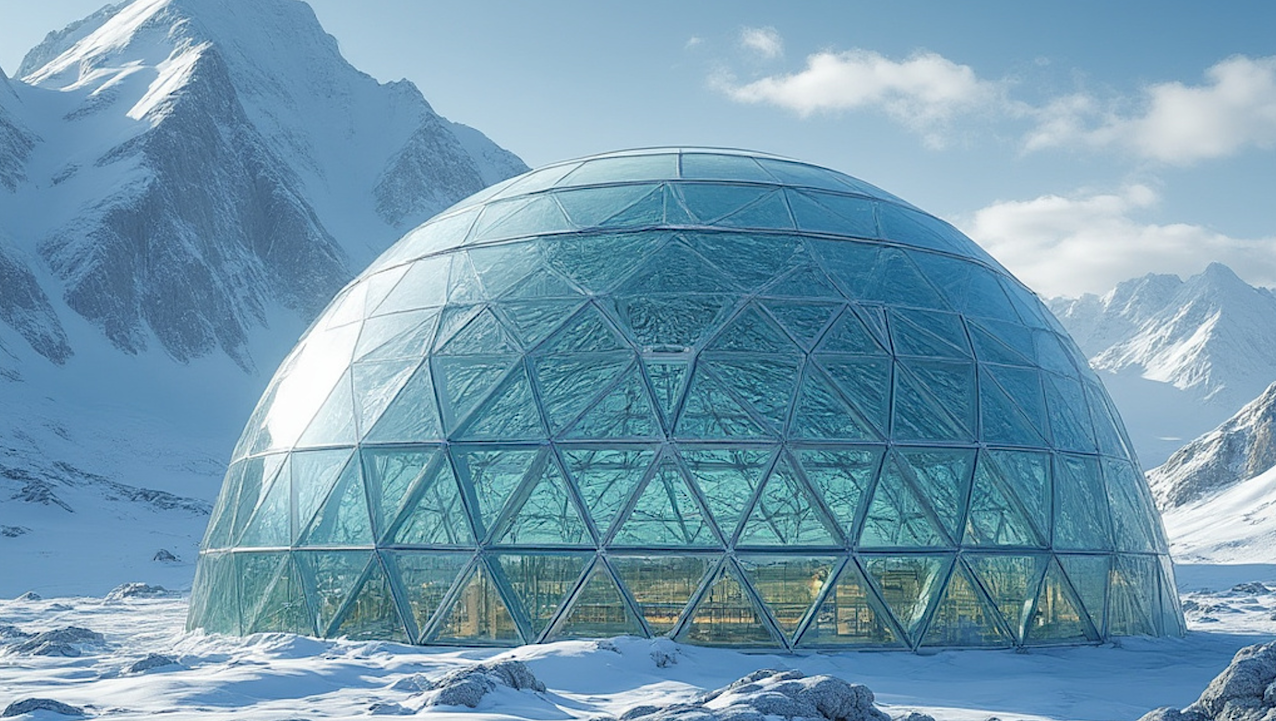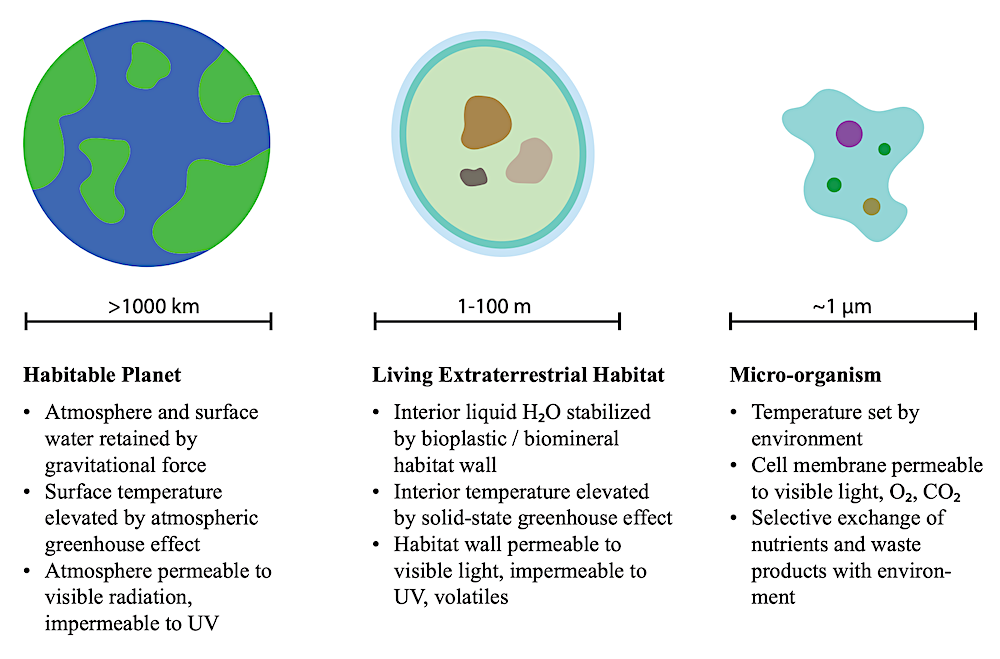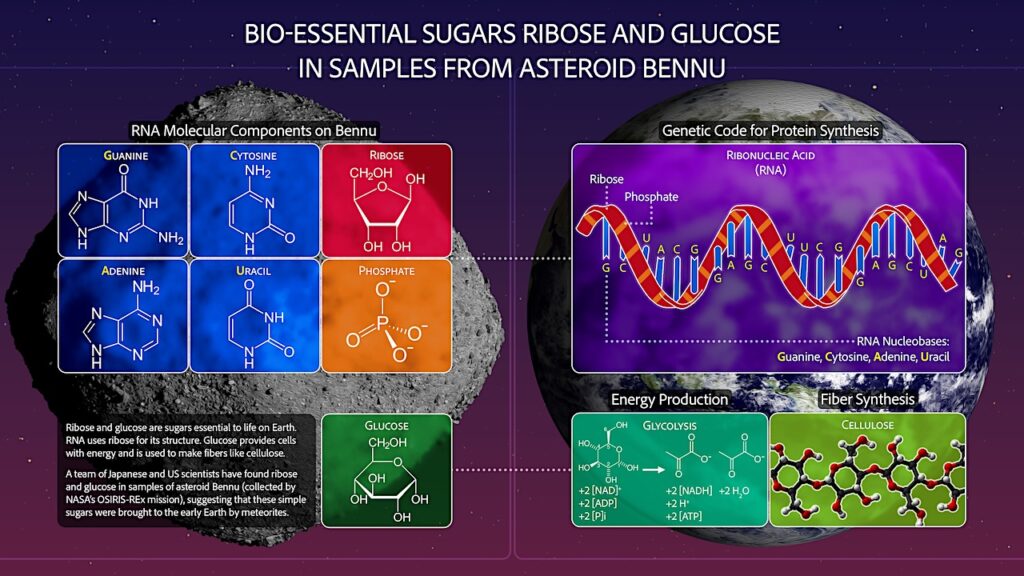Self-sustaining Living Habitats In Extraterrestrial Environments

Standard definitions of habitability assume that life requires the presence of planetary gravity wells to stabilize liquid water and regulate surface temperature. Here the consequences of relaxing this assumption are evaluated.
Temperature, pressure, volatile loss, radiation levels and nutrient availability all appear to be surmountable obstacles to the survival of photosynthetic life in space or on celestial bodies with thin atmospheres.
Biologically generated barriers capable of transmitting visible radiation, blocking ultraviolet, and sustaining temperature gradients of 25-100 K and pressure differences of 10 kPa against the vacuum of space can allow habitable conditions between 1 and 5 astronomical units in the solar system.
Hence ecosystems capable of generating conditions for their own survival are physically plausible, given the known capabilities of biological materials on Earth. Biogenic habitats for photosynthetic life in extraterrestrial environments would have major benefits for human life support and sustainability in space.
Because the evolution of life elsewhere may have followed very different pathways from on Earth, living habitats could also exist outside traditional habitable environments around other stars, where they would have unusual but potentially detectable biosignatures.

Schematic summarizing the key similarities and differences between a habitable planet, a minimally complex extraterrestrial habitat, and a micro-organism, with a focus on their physical properties and exchange of mass and energy with their environments. — astro-ph.EP
R. Wordsworth, C. Cockell
Comments: In press at Astrobiology
Subjects: Earth and Planetary Astrophysics (astro-ph.EP)
Cite as: arXiv:2409.14477 [astro-ph.EP] (or arXiv:2409.14477v1 [astro-ph.EP] for this version)
https://doi.org/10.48550/arXiv.2409.14477
Focus to learn more
Submission history
From: Robin Wordsworth
[v1] Sun, 22 Sep 2024 14:57:26 UTC (1,010 KB)
https://arxiv.org/abs/2409.14477
Astrobiology








